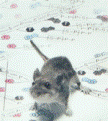Papers in the Biological Sciences

Jay F. Storz Publications
Document Type
Article
Date of this Version
5-2011
Abstract
Background: Recombinant DNA technologies have played a pivotal role in the elucidation of structure-function relationships in hemoglobin (Hb) and other globin proteins. Here we describe the development of a plasmid expression system to synthesize recombinant Hbs in Escherichia coli, and we describe a protocol for expressing Hbs with low intrinsic solubilities. Since the alpha- and beta-chain Hbs of different species span a broad range of solubilities, experimental protocols that have been optimized for expressing recombinant human HbA may often prove unsuitable for the recombinant expression of wildtype and mutant Hbs of other species.
Methodology/Principal Findings: As a test case for our expression system, we produced recombinant Hbs of the deer mouse (Peromyscus maniculatus), a species that has been the subject of research on mechanisms of Hb adaptation to hypoxia. By experimentally assessing the combined effects of induction temperature, induction time and E. coli expression strain on the solubility of recombinant deer mouse Hbs, we identified combinations of expression conditions that greatly enhanced the yield of recombinant protein and which also increased the efficiency of post-translational modifications.
Conclusion/Significance: Our protocol should prove useful for the experimental study of recombinant Hbs in many nonhuman animals. One of the chief advantages of our protocol is that we can express soluble recombinant Hb without coexpressing molecular chaperones, and without the need for additional reconstitution or heme-incorporation steps. Moreover, our plasmid construct contains a combination of unique restriction sites that allows us to produce recombinant Hbs with different alpha- and beta-chain subunit combinations by means of cassette mutagenesis.


Comments
PLoS ONE 6(5): e20176. doi:10.1371/journal.pone.0020176. This is an open-access article, free of all copyright, and may be freely reproduced, distributed, transmitted, modified, built upon, or otherwise used by anyone for
any lawful purpose. The work is made available under the Creative Commons CC0 public domain dedication.